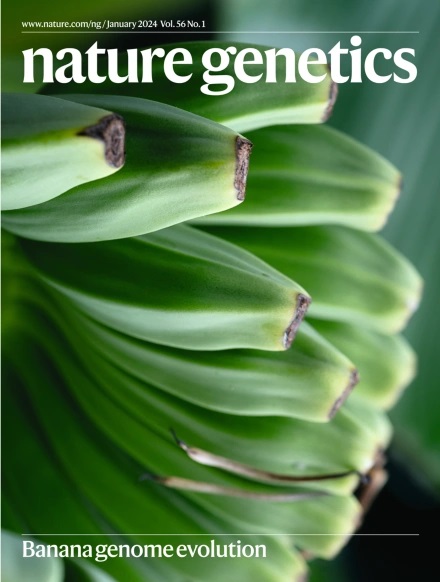配子相不平衡对复杂性状遗传力的贡献
IF 31.7
1区 生物学
Q1 GENETICS & HEREDITY
引用次数: 0
摘要
非随机交配诱导非连锁遗传变异之间的全基因组相关性,称为配子相不平衡(GPD),其对遗传力的贡献尚未确定。在这里,我们引入了基于不平衡基因组的限制最大似然(DGREML)方法来同时量化snp对遗传力的加性贡献及其方向协方差。我们将DGREML应用于来自不同生物库的55万个体的26种表型,发现交叉常染色体GPD对身高、受教育程度、智力、收入、自评价健康状况和久坐行为的snp遗传力贡献了10-27%。我们观察到GPD对英国、中国和日本人群身高遗传力的差异贡献。最后,受教育程度和身高的双变量DGREML分析表明,跨常染色体GPD至少贡献了32%的遗传相关性。总之,我们的多功能和强大的方法揭示了复杂性状的遗传结构的未被研究的特征,并告知产生这些特征的潜在机制。本文章由计算机程序翻译,如有差异,请以英文原文为准。

The contribution of gametic phase disequilibrium to the heritability of complex traits
Nonrandom mating induces genome-wide correlations between unlinked genetic variants, known as gametic phase disequilibrium (GPD), whose contribution to heritability remains uncharacterized. Here we introduce the disequilibrium genome-based restricted maximum likelihood (DGREML) method to simultaneously quantify the additive contribution of SNPs to heritability and that of their directional covariances. We applied DGREML to 26 phenotypes of 550,000 individuals from diverse biobanks and found that cross-autosome GPD contributes 10–27% of the SNP-based heritability of height, educational attainment, intelligence, income, self-rated health status and sedentary behaviors. We observed a differential contribution of GPD to the heritability of height between the UK, Chinese and Japanese populations. Finally, bivariate DGREML analyses of educational attainment and height show that cross-autosome GPD contributes at least 32% of their genetic correlation. Altogether, our versatile and powerful method reveals understudied features of the genetic architecture of complex traits and informs potential mechanisms generating these features. Disequilibrium genome-based restricted maximum likelihood (DGREML) simultaneously quantifies the contribution of SNPs and their directional covariances to trait heritability and shows that cross-autosomal correlations contribute substantially to SNP-based heritability for many complex traits.
求助全文
通过发布文献求助,成功后即可免费获取论文全文。
去求助
来源期刊

Nature genetics
生物-遗传学
CiteScore
43.00
自引率
2.60%
发文量
241
审稿时长
3 months
期刊介绍:
Nature Genetics publishes the very highest quality research in genetics. It encompasses genetic and functional genomic studies on human and plant traits and on other model organisms. Current emphasis is on the genetic basis for common and complex diseases and on the functional mechanism, architecture and evolution of gene networks, studied by experimental perturbation.
Integrative genetic topics comprise, but are not limited to:
-Genes in the pathology of human disease
-Molecular analysis of simple and complex genetic traits
-Cancer genetics
-Agricultural genomics
-Developmental genetics
-Regulatory variation in gene expression
-Strategies and technologies for extracting function from genomic data
-Pharmacological genomics
-Genome evolution
 求助内容:
求助内容: 应助结果提醒方式:
应助结果提醒方式:


